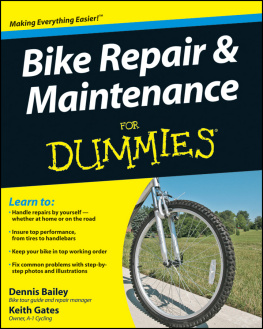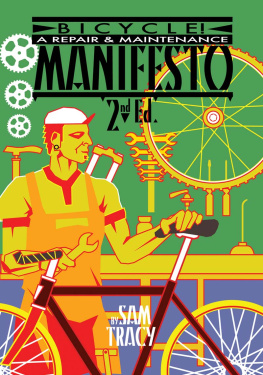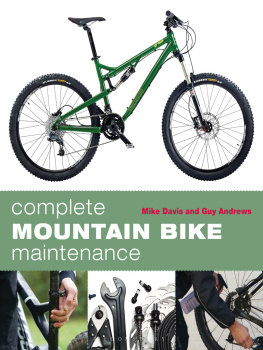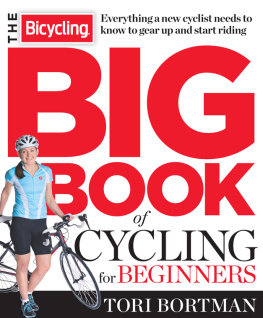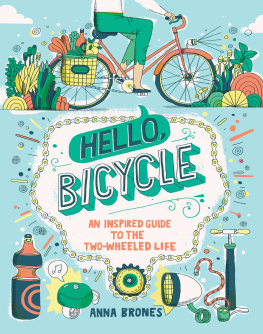The information in this book is meant to supplement, not replace, proper exercise training. All forms of exercise pose some inherent risks. The editors and publisher advise readers to take full responsibility for their safety and know their limits. Before practicing the exercises in this book, be sure that your equipment is well maintained, and do not take risks beyond your level of experience, aptitude, training, and fitness. The exercise and dietary programs in this book are not intended as a substitute for any exercise routine or dietary regimen that may have been prescribed by your doctor. As with all exercise and dietary programs, you should get your doctors approval before beginning.
Mention of specific companies, organizations, or authorities in this book does not imply endorsement by the author or publisher, nor does mention of specific companies, organizations, or authorities imply that they endorse this book, its author, or the publisher. Internet addresses and telephone numbers given in this book were accurate at the time it went to press.
Portions of this book were previously published in The Bicycling Guide to Complete Bicycle Maintenance & Repair (6th edition) by Todd Downs, copyright 2010 by Rodale Inc.
2014 by Rodale Inc.
All rights reserved. No part of this publication maybe reproduced or transmitted in any form or by any means, electronic or mechanical, including photocopying, recording, or any other information storage and retrieval system, without the written permission of the publisher.
Bicycling is a registered trademark of Rodale Inc.
Book design by Chris Rhoads
Interior photos by Mitch Mandel and Thomas MacDonald/Rodale Images
Select product photography courtesy of the manufacturer
Interior illustrations Beau Daniels/Artistic License Inc.
Library of Congress Cataloging-in-Publication Data
ISBN-13: 978-1-62336-166-2 paperback
ISBN-13: 978-1-62336-167-9 ebook

We inspire and enable people to improve their lives and the world around them.
rodalebooks.com
CONTENTS
THE 7 RULES OF BIKE REPAIR
This book features core bike maintenance fundamentals that every road cyclist needs to know, pulled from The Bicycling Guide to Complete Bicycle Maintenance and Repair and packaged in a portable format. Before you dive into any repair, though, you should keep in the mind the following seven rules for any home mechanic. Keep a copy of this list in your toolbox.
1. Think safety first. Wear rubber gloves to protect your hands from solvents and grease. Use goggles to protect your eyes when using hammers or power tools. Watch where you put your hands in case a tool slips. And dont sprint away on a just-repaired bikeease into it in case the problem isnt solved.
2. Dont wait. Small problems will eventually become severe. Preventive maintenance is the best way to take care of your bike.
3. Righty, tighty; lefty, loosey. Most parts are turned to the right to tighten and to the left to loosen. The common exceptions to this rule are the left pedal and the right side of the bottom bracket.
4. Check that the threads match. Dont mismatch threaded parts. And never force things: Always grease threads first, then start threading them together carefully and gently.
5. Tighten gently. Bicycle components are often small and made of lightweight materials. Tighten, check the tightness, then tighten some more if needed. Thats better than stripping threads and breaking parts.
6. Leave some repair jobs to the experts. Recognize your skills and limitations. Learn to make wise choices as to what you can handle and whats better left to a trained shop mechanic.
7. Have fun out there. Theres no better way to get to know your bikeand build confidence in your ridethan to work on it yourself!
PART 1 / FOUNDATION
CHAPTER 1
FRAME
Caring for the heart and soul of your bike
Your frame does more than spotlight the bikes brand. Its material, geometry, and design help define the characteristics of the ride. Caring for a well-made frame isnt difficult, but its good to know how the pieces work togetherand what that means for you.
WHATS IN THIS SECTION
FRAME BASICS
FRAME CARE BASICS
WHAT TO KNOW ABOUT FRAME GEOMETRY
Frame Basics
Anatomy of a Frame: Road Bikes

Frame Care Basics
Keep it clean. Salt and dirt can grind on frames and parts. Keep yours cleanbut dont wash it with direct pressure from a hose, which can force dirt into your bikes bearings.
Keep it dry. You can (and should) ride your bike in the wet, but you should wipe off the moisture after your rides to keep corrosion at bay. Own a steel frame? Consider treating the inside of the frame with J.P. Weigles Frame Saver spray (available online and at your local shop).
Watch the bends. If your frame is bent or misaligned, take it to your shop. Steel frames can be realigned; aluminum might be able to be realigned, depending on the bend. Carbon frames? Misalignment might mean bigger problems.

What to Know about Frame Geometry
Head tube angle: Steeper angles (up to 74 degrees on some road bikes) create quick handling; relaxed head angles (68 degrees or lower on some mountain bikes) make for stable descending.
Fork rake: This is determined by the amount that the front axle is offset from the centerline of the fork.
Note: Head tube angle, fork rake, and tire diameter combine to create whats called trail. To find trail, draw a straight line down the center of the head tube to the ground, then draw a line from the axle straight down to the ground. The difference is trail: Longer measurements mean more stability; shorter measurements mean quicker handling.
Seat tube angle: Steeper angles are good for high-cadence pedaling; relaxed angles are more for muscling big gears.
Chainstay length: Longer chainstays make for a stable ride; shorter chainstays make for more-responsive handling.
Bottom bracket drop: Draw a horizontal line from the center of the front axle to the center of the rear. BB drop is how far the center of the BB is from that line. More drop means more stability (noticeable in corners) but can impact ground clearance while pedaling.
CHAPTER 2
HEADSETS
Adjust and maintain this most-overlooked part
A properly adjusted headset can go years without needing much (if any) servicing, which is why most riders dont even think about their headsetsuntil something goes dramatically wrong. Here, were going to show you how to keep a thread-less headset running smoothly for a long, long time.


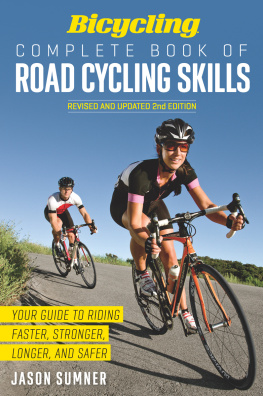
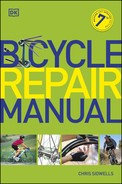
![Shanks - Essential bicycle maintenance & repair: [step-by-step instructions to maintain and repair your road bike]](/uploads/posts/book/235248/thumbs/shanks-essential-bicycle-maintenance-repair.jpg)
